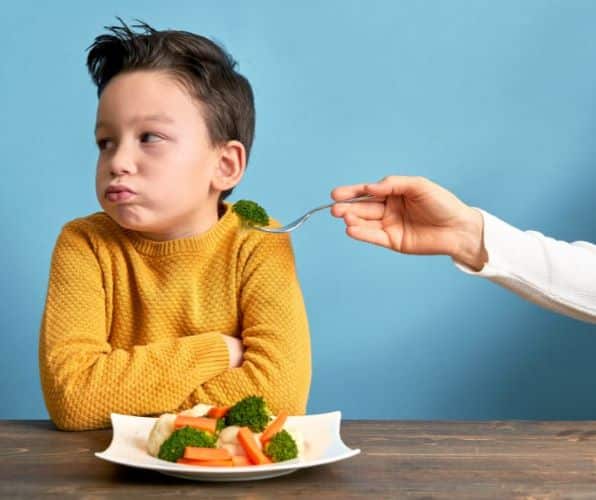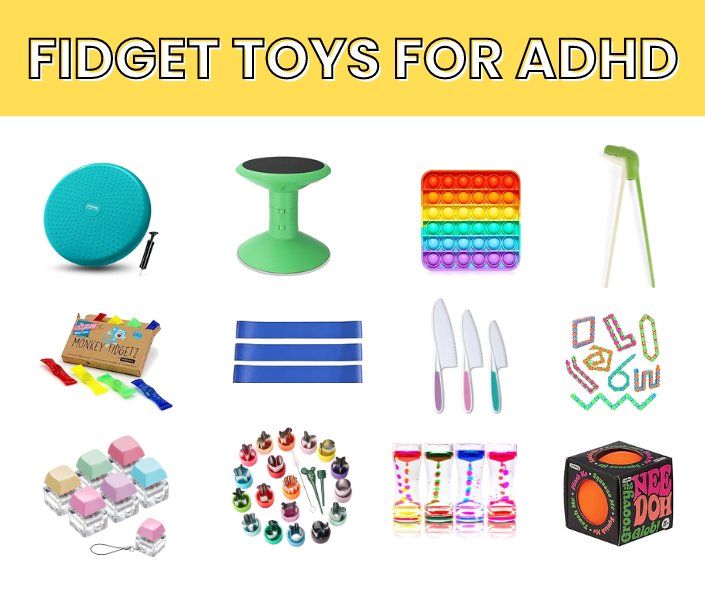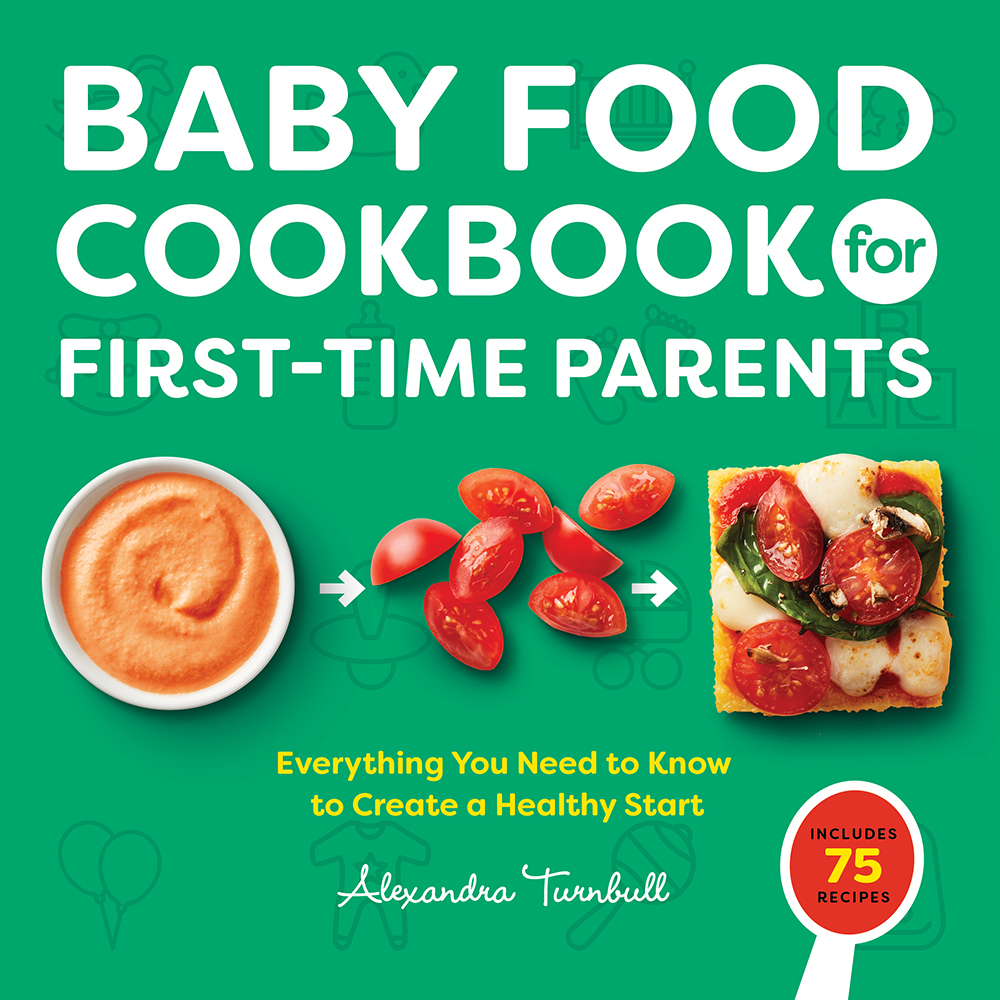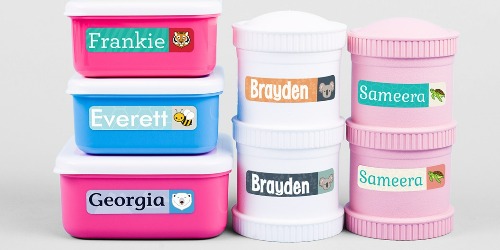This post may contain affiliate links. This article is for informational and educational purposes only and is not/should not be used for medical advice. If you’re concerned about your child’s mental, emotional, or physical health, always speak with your child’s health care team.
Attention-Deficit/Hyperactivity Disorder, also known as ADHD, is a neurodevelopmental disorder relating to inattention, hyperactivity, and/or impulsivity and is found in 9.8% of children ages 3 to 17 years of age.
ADHD makes focusing on the simplest of tasks challenging and mealtimes are no exception. Throw in picky eating and it might feel like a battle every time you offer your child anything to eat.
Recent research suggests that children with ADHD may be more likely to have restricted diets associated with picky eating.
This post will discuss why ADHD and picky eating go hand in hand, 6 helpful strategies for ADHD and picky eating, and mealtime considerations to set your child up for success.
To learn more about the different types of ADHD, causes, diagnosis and treatment options, read here.
Table of Contents
ADHD and Picky Eating

The association between ADHD and picky eating is a relatively new thought, but research is showing there may be a connection.
Overall, it makes sense that children with ADHD may have more selective eating preferences, particularly in children with more impulsive behaviors.
Children with ADHD may have a hard time sitting still at meals, focusing on the food in front of them, or even have aversions to certain textures, smells, and flavors.
Common picky eating habits that come with ADHD may include distracted eating, decreased appetite, sensory processing issues, and possibly preferences towards sugary foods.
Distracted Eating
Every child, including those who have ADHD are unique in their own ways. This includes how long they may sit at the table.
Your child may last less than five minutes at the table because they get distracted or don’t have much of an appetite. But then again, maybe your child is inattentive and takes what feels like forever to eat.
Both short and long mealtimes may occur in children with ADHD and picky eating.
Decreased Appetite
Many children with ADHD may also be on medication that suppresses their appetite, limiting their intake and interest in food overall.
It’s important to leverage all snack and mealtimes to maximize what they eat. You can also try to prioritize certain nutrients to get the most bang for your buck.
Sensory Processing Issues
Eating is one of the most difficult sensory processes our body goes through. Instead of just five senses, our body actually experiences eight senses while we’re eating!
With all of these different sensory experiences, it’s not surprising children with ADHD may be dysregulated at mealtime and in turn, more preferential or avoidant of certain foods.
The Eight Senses Involved in Eating
- Auditory (Hearing)
- Visual( Sight)
- Tactile (touch)
- Vestibular (balance)
- Olfactory (smell)
- Gustatory (taste)
- Proprioception (body awareness)
- Interoception (recognizing internal cues)
Sensory processing problems are more common in children with ADHD. Every child may be different in regards to what sensory stimuli triggers them.
Children who react to loud noises, such as the toilet flushing, blenders running, etc may have a hard time eating in loud environments.
Children who are particular about the way their clothes feel may have aversions to certain textures of food.
Children who don’t like to be wet may avoid sticky, wet, or slimy foods.
Preferences to Sugary Foods
Many people believe that sugar can be the cause of hyperactivity in children, but this has not been proven.
However, some research suggests that children with ADHD are more likely to crave sugary foods due to the increase in dopamine the sugar from foods gives their brain, leaving the more bland foods to be less preferred or even disliked.

Elimination Diets for ADHD
You may have heard that an effective way to treat ADHD in children is through an elimination diet.
An elimination diet typically consists of taking out or avoiding specific foods or ingredients, such as common allergens, gluten, histamine, sugar, and food additives, including artificial colorings.
While some research suggests that elimination diets can provide promising results, these diets haven’t been studied long term.
Elimination diets are difficult to stick to over long periods of time, can place a lot of burden on families, and puts children at risk for nutritional deficiencies.
If you have a child with ADHD who is also a picky eater, it’s likely that your child’s diet is already limited. With this in mind, I do not recommend restricting their diet as it can put them at risk for nutritional deficiencies, potentially further impacting ADHD symptoms.
You know your child best, therefore choose foods that your child enjoys, you have access to, and can afford.
What’s more important than trying to micromanage or analyze every ingredient or food your child eats is that they’re eating in general. A child who isn’t getting what they need is more likely to be dysregulated.
Helpful Strategies for ADHD and Picky Eating
While there’s no quick fix for solving the challenges that come along with ADHD and picky eating, there are several things you can implement to help set them up for success!
Here are six helpful strategies for kids with ADHD and Picky Eating. These include sticking to a routine, making meals engaging, ensuring proper support for posture, prioritizing certain nutrients, providing opportunity for autonomy, and making mealtimes fun.
Routine
Children thrive on routine, particularly children with ADHD.
Try to be as consistent as possible when it comes to mealtimes for your child so they know when to expect foods will be available, their appetite is more regulated, and they come to the table hungry, but not starving.
Visuals often work great for children with ADHD. Try using a visual timer or a visual schedule to help them better understand their routine.
Engagement
Because children with ADHD have a hard time focusing on one thing at a time, try making mealtimes more engaging.

How to Make Mealtimes Engaging for Kids with ADHD
- Ask questions about the foods available
- Give them a kid-safe knife to cut their food
- Offer chopsticks, food picks, or novelty utensils
- Provide mini cookie cutters
- Offer fidget toys at the meal
- Play tic tac toe with snack foods
- Offer fidget-type foods such as edamame, mandarin oranges, string cheese, or pistachios.
- Let them bring a stuffed animal to the table to pretend to feed
- Listen to music – we love using our Yoto audio player at mealtimes
- Use a visual timer at meals
Novelty Kitchen Tools
Fidget Toys for ADHD
While some of these toys for ADHD might seem like a distraction, they can help your child get to and stay at the table, which makes it more likely they will engage with the food and possibly eat.
Posture
It’s important that your child is well supported at mealtimes with good posture. Not only does good posture decrease the risk of choking, but it helps them focus on their food, instead of trying to get comfortable.
Children with ADHD often have a hard time sitting still at meals. However there are many things you can do to help them funnel that energy so they can focus on fueling their body when it’s time to eat.
Helpful Strategies for Kids with ADHD:
- Let them stand
- Give them a foot band on their chair
- Use a wobble seat
- Offer a visual timer such as a sand timer or a countdown clock
- Provide novelty plates, kitchen gadgets, and utensils, to make meals more engaging
- Let kids cut their own foods with kid-safe knives or mini cookie cutters
- Ask kids to bring a stuffed animal to pretend to feed
- Offer a fidget toy with meals
- Offer chairs for kids with ADHD
Prioritize Certain Nutrients
Many studies have evaluated the impact of diet and ADHD, however results are conflicting and the associations between ADHD and single nutrient intake are inconsistent.
The best nutrients for ADHD include:
- Protein
- Iron
- Omega-3 fatty acids
- Vitamin D
- Magnesium
For examples of foods rich in these nutrients, read more here.
Keep in mind that there’s no one single nutrient that will be a quick fix, but instead focus on adding in more nutrient dense foods that support your child’s overall health and growth.
Autonomy
Autonomy, otherwise known as the ability to make your own decision, can be a helpful tool to peaceful mealtimes.
Children often have most of the decisions in their lives made for them, so giving them a little say at mealtimes goes a long way.
Ways you can give autonomy at mealtimes:
- Letting them decide if and how much they eat
- Giving them options: “do you want strawberries or blueberries?”
- Including their preferences into the menu or grocery list
- Letting them pick out their cup, plate, utensils, etc
Make Mealtimes Fun!
When mealtime is enjoyable, your child is more likely to participate. If mealtime is stressful, your child may get defensive, avoidant, or have increased behaviors related to simply coming to the table.
Creating a positive experience around mealtime and eating is vital to developing a healthy relationship with food.
You can help make mealtimes fun by:
- Being silly
- Having conversation – we love these talking point cards
- Eating meals and snacks as a family when possible
- Including your child in the menu selections
- Providing novelty utensils
- Offer food in fun shapes using cookie cutters
Novelty can play a large role for kids who have ADHD and picky eating habits. Using fun utensils, food picks, and cute-shaped foods, doesn’t guarantee your child will participate, but it can help!
Meal planning for ADHD
For parents of children with ADHD, it can be helpful to plan out the menu with your child so they know what to expect and they can be included in what’s available.
Grab the Ultimate Meal Planning Toolkit for Families to help organize and plan out your meals for the week or month!

Conclusion
ADHD is a neurodevelopmental disorder relating to inattention, hyperactivity, and/or impulsivity and is found in 9.8% of children ages 3 to 17 years of age.
Recent research suggests that children with ADHD may be more likely to have restricted diets associated with picky eating.
Children with ADHD may have a more challenging time at meals and eating a wider variety due to distracted eating, a decreased appetite, sensory processing issues, and preference of sweeter foods.
While some research suggests that elimination diets can provide promising results, these diets are hard to stick to over long periods of time, can place a lot of burden on families, and puts children at risk for nutritional deficiencies.
While there’s no quick fix ADHD and picky eating, there are several things you can implement to help set them up for success. These include sticking to a routine, making meals engaging, ensuring proper support for posture, prioritizing certain nutrients, providing opportunity for autonomy, and making mealtimes fun.
As always, speak to your child’s health care provider regarding any diagnoses, treatments, supplementation or questions regarding their health and wellness. This information is not to be used for medical purposes.
Disclaimer
This article written by Alexandra Turnbull provides information that should not take the place of medical advice. You are encouraged to talk to your health care providers (doctor, registered dietitian, pharmacist, etc.) about your interest in, questions about, or use of dietary supplements and medical treatment and what may be best for you or your child’s overall health. Any mention in this publication of a specific product or service, or recommendation from an organization or professional society, does not represent an endorsement by Alexandra Turnbull of that product, service, or expert advice.





